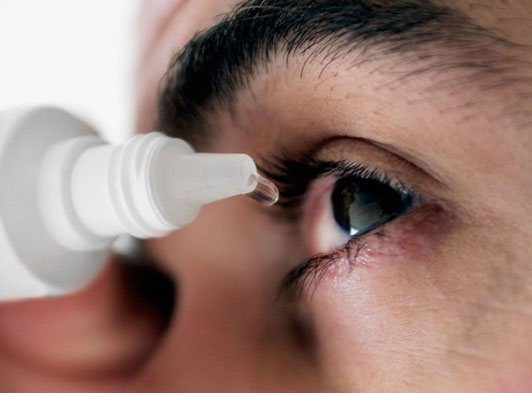How to prevent effective pinkeye
People with pinkeye can spread the disease to others even if they do not have clear symptoms. Wearing glasses also does not eliminate the risk of infection. So how to prevent effective pinkeye?
Suffering from red-eye pain, the whole family spreads
Pinkeye, also known as conjunctivitis, is a common disease that occurs in all ages and often increases when the weather changes. The initial symptoms of the disease are burning eyes, pain, a feeling of rash, blurred vision, swollen eyelids, tears.
Pinkeye is transmitted through the respiratory tract, personal items such as face towels, wash basins. The cause of this phenomenon may be bacteria, viruses. In cases of viral eye pain, it can be spread through many routes but is particularly dangerous and is most rapidly transmitted through the respiratory system. Patients with pinkeye may be accompanied by lymphadenitis or sometimes with gangrene.
People with pinkeye can spread the disease to others even if they do not have clear symptoms, the infection occurs in the incubation period. Once the patient has recovered, it can still infect others within a week.
Wearing glasses does not eliminate the risk of spreading the disease but only minimizes the chance of spreading the disease. If wearing glasses but still sharing face towels, wash basins, the ability to spread the disease is very large.
Pinkeye is spread through tiny droplets when the patient coughs or sneezes; through personal belongings, handkerchiefs; through contaminated water (pool water). Therefore, the disease is contagious in children who attend the same school or who live in the same house.

Pinkeye is transmitted through the respiratory tract, personal items such as face towels, wash basins.(Photo: kesq.com).
Symptom
- Eye pain is severe, ragged, feels like sand in the eyes;Tears and lots of rust, sometimes in the morning, makes the eyelids stick.
- Eye lashes slightly swollen, slightly painful, swollen and red conjunctivaThe disease usually starts from one eye, after a few days to the second eye .
- Accompanied by coughing, mild fever, floating lymph nodes in the ear (common in children).
Prevention
Pinkeye is very susceptible, easily spread to both the family and the community so it is necessary to maintain good hygiene to control the spread of the disease for themselves and those around them:
- Do not rub your eyes with your hands.
- Wash your face at least 3 times / day with clean water, clean, separate towels.Wash towels with soap, dry towels in the sun.Wash your hands well and often with warm water, especially before and after eye drops.
- Wash your eyes daily with physiological saline (morning, lunch, dinner).
When you are having pinkeye
- Patients need to rest, isolation treatment, prescription medication of ophthalmologists.If the disease is not relieved after 5-7 days, it must be re-examined.You can use 0.9% physiological saline or artificial tears to wash away pathogens, wash away secretions and rusty eyes, soothe irritating eyes.Clean the eye rinse several times a day with a damp tissue or cotton cloth, then throw away immediately.It is necessary to increase nutritional supplements, fruits, vitamins and minerals to increase resistance to heal more quickly.
- People who do not have the disease need to minimize contact with patients, when contacting, there should be masks.In the home, there is a sick person who needs to limit sleeping in the same bed with the patient during red-eye and after at least 1 week.
- Wash bed sheets, pillow cases, towels in detergent and warm water.
- Avoid sharing items such as face towels and sinks.
- Wash your hands after eye drops.
- Do not look into the healing eye of the affected eye.
- If your child is sick, stay home, do not take to school daycare or crowded places during illness.

Pinkeye is contagious but usually benign, with little sequelae.
Although pinkeye is an acute disease, symptoms are loud and contagious, but often benign, leaving sequelae, however, the disease often affects many activities, learning and labor, there are many cases. Long-term illness and bad complications affect vision later so people always have a good sense of prevention and need timely intervention when they get sick.
- Why is red eye pain transmitted through inhalation?
- The red-eye epidemic broke out strongly in Hanoi
- Unexpected 'causes' cause pinkeye
- Abuse of corticosteroids, eye drops containing corticosteroids: Unpredictable complications
- Pinkeye increased in Hanoi
- Hanoi: Red-eye pain in the season
- How to not be struck by thunderstorms?
- What is the most effective way to prevent dengue?
- Genetically modified bacteria can prevent obesity
- Measures to prevent and treat mumps effectively
- Walk 10 minutes a day to prevent diabetes
- Thailand: A model for effective flood disaster response
 Green tea cleans teeth better than mouthwash?
Green tea cleans teeth better than mouthwash? Death kiss: This is why you should not let anyone kiss your baby's lips
Death kiss: This is why you should not let anyone kiss your baby's lips What is salmonellosis?
What is salmonellosis? Caution should be exercised when using aloe vera through eating and drinking
Caution should be exercised when using aloe vera through eating and drinking